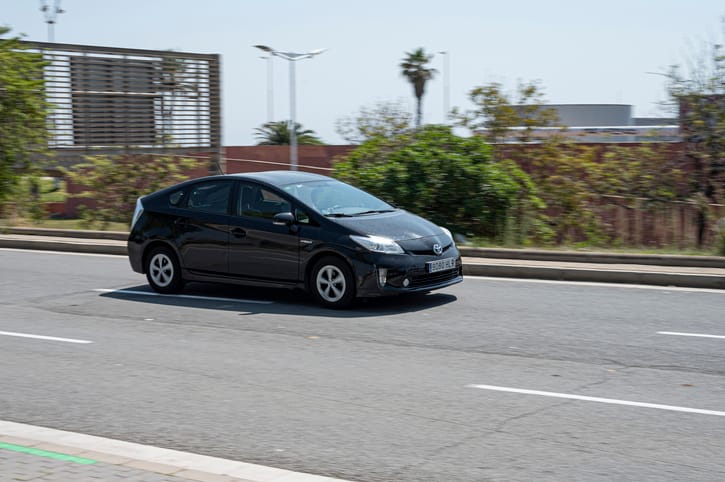The Toyota Prius v: A Discontinued But Feature-Rich Hybrid MPV

The Toyota Prius v, also known as the Prius α (Alpha) in Japan and Prius+ in Europe and Singapore, was a versatile hybrid minivan produced by Toyota from 2011 to 2017. While no longer available new, the Prius v offers a compelling option for used car shoppers seeking a fuel-efficient and spacious family vehicle. This article delves into the key features, history, and potential drawbacks of the Toyota Prius v.
Unveiling Versatility: The Prius v Takes the Stage
Toyota unveiled the Prius v at the 2011 North American International Auto Show, marking the first significant expansion of the Prius lineup. The "v" stands for "versatility," and the Prius v lived up to its name by offering a larger and more practical alternative to the standard Prius hatchback.
Here's a breakdown of the Prius v's core features:
- Body Style: The Prius v adopted a compact MPV (Multi-Purpose Vehicle) design, similar to wagons but with a higher seating position. This provided ample headroom and legroom for passengers and significant cargo space.
- Hybrid Drivetrain: Like other Prius models, the Prius v used a full hybrid system that combined a gasoline engine with an electric motor for efficient fuel economy.
- Fuel Economy: The Prius v boasted impressive fuel efficiency for its size, achieving an EPA-estimated combined rating of 40 mpg (miles per gallon) in most trims.
- Cargo Capacity: The Prius v excelled in cargo space, offering 34.3 cubic feet behind the rear seats and a maximum of 67.3 cubic feet with the seats folded down.
- Features and Technology: The Prius v came equipped with various features depending on the trim level, including a sunroof, navigation system, heated seats, and a JBL sound system.

A Closer Look: Trims, Features, and Performance
The Prius v offered several trims, each catering to different needs and budgets:
- Two: The base trim provided essential features like air conditioning, a six-speaker sound system, and Bluetooth connectivity.
- Three: This trim added cruise control, alloy wheels, and upgraded upholstery.
- Four: The Four trim introduced fog lights, a moonroof, and a premium sound system.
- Five: The top-of-the-line Five trim offered features like leather seating, a navigation system, and a driver assistance package.
Throughout its production years, the Prius v remained mechanically similar. It used a 1.8-liter four-cylinder gasoline engine paired with an electric motor, generating a combined output of 134 horsepower. While not known for its acceleration, the Prius v prioritized fuel efficiency and smooth driving experience.
The Prius v Compared: Stacking Up Against the Competition
When the Prius v debuted, it competed with other hybrid and non-hybrid minivans and crossover SUVs:
- Hybrid Rivals: The Prius v's closest competitor was the Ford C-Max Hybrid, which offered similar fuel economy and cargo space. However, the C-Max Hybrid wasn't as widely available and was discontinued in 2018.
- Non-Hybrid Minivans: Traditional minivans like the Honda Odyssey and Chrysler Pacifica provided more powerful engines and more spacious interiors. However, they sacrificed fuel efficiency significantly.
- Crossover SUVs: Hybrid crossovers like the Toyota Highlander Hybrid offered a blend of functionality and efficiency, but they didn't match the cargo capacity of the Prius v.
Ultimately, the Prius v carved out a niche for itself, catering to drivers who prioritized fuel economy and versatility over outright power and maximum passenger space.
Why Did Toyota Discontinue the Prius v?
Toyota ended Prius v production in 2017. Several factors likely contributed to this decision:
- Shifting Market Preferences: The popularity of crossover SUVs continued to rise, offering a blend of car-like comfort and SUV capability that appealed to many buyers.
- Arrival of the Prius Prime: Toyota introduced the Prius Prime, a plug-in hybrid version of the Prius, offering greater electric driving range and potentially even better fuel efficiency.
- Limited Sales Growth: While the Prius v had its loyal following, its sales figures never reached the heights of the standard Prius.
